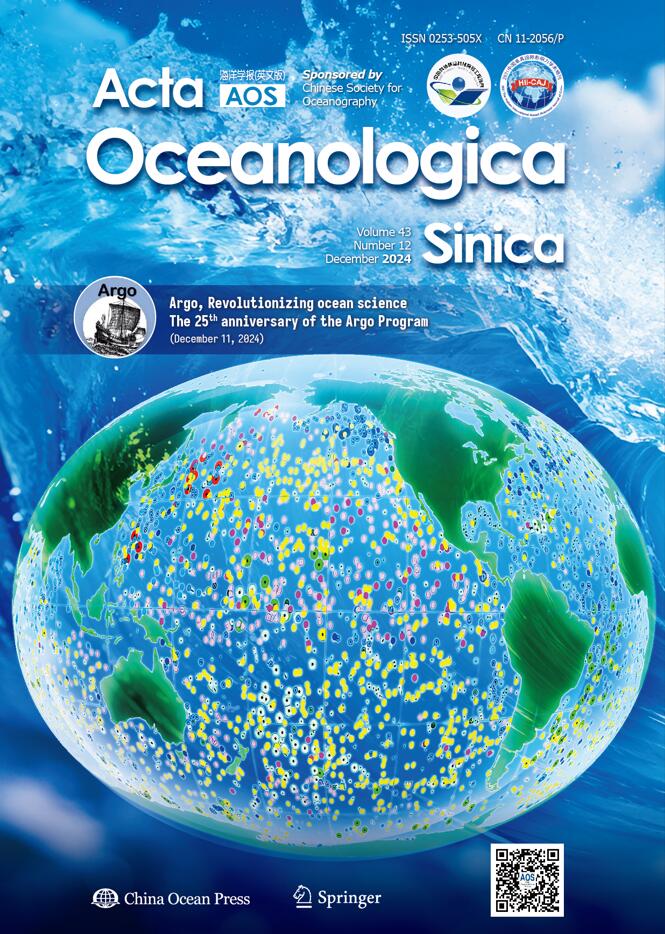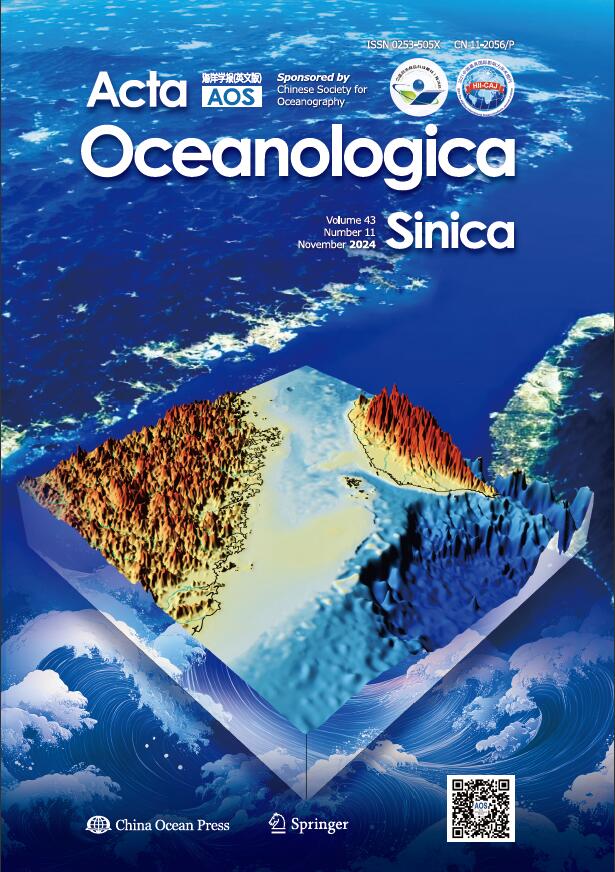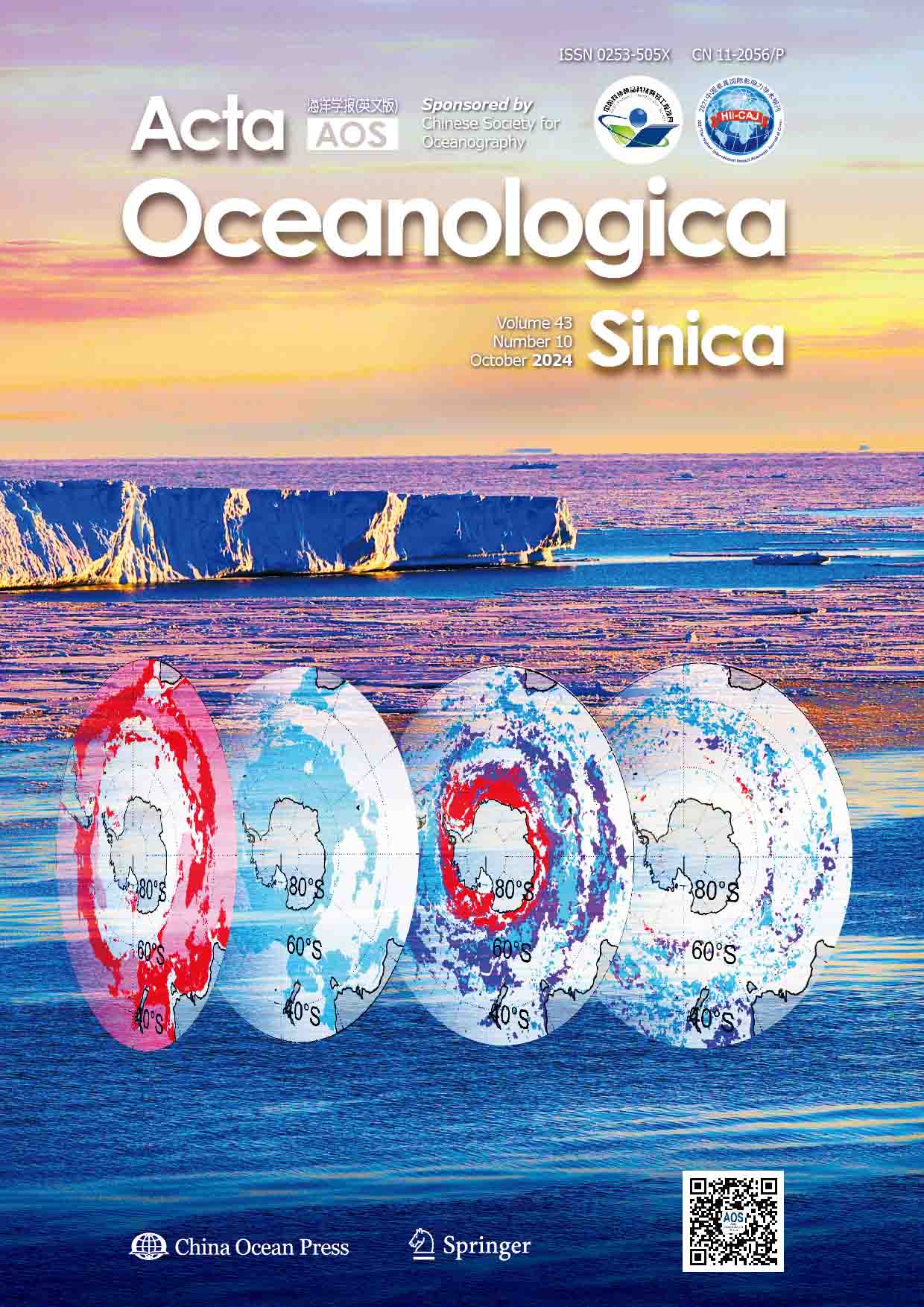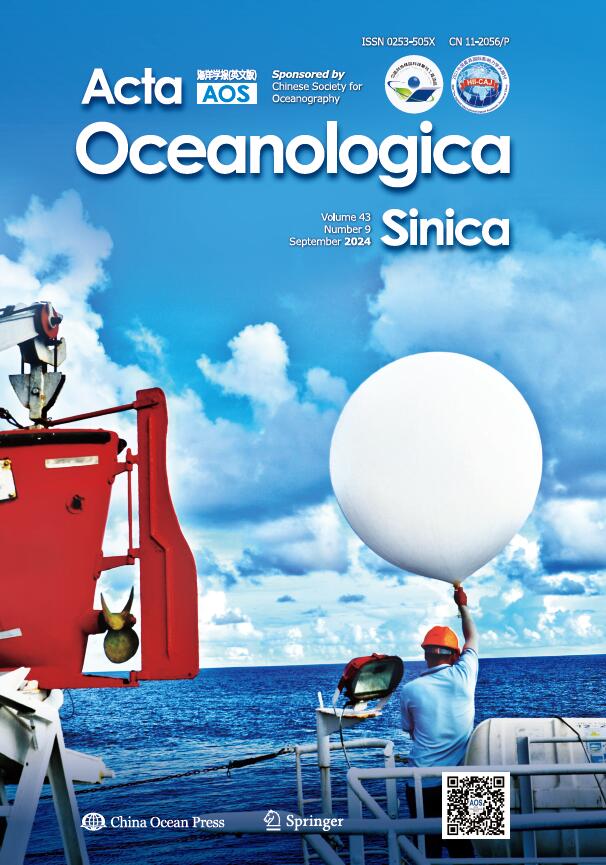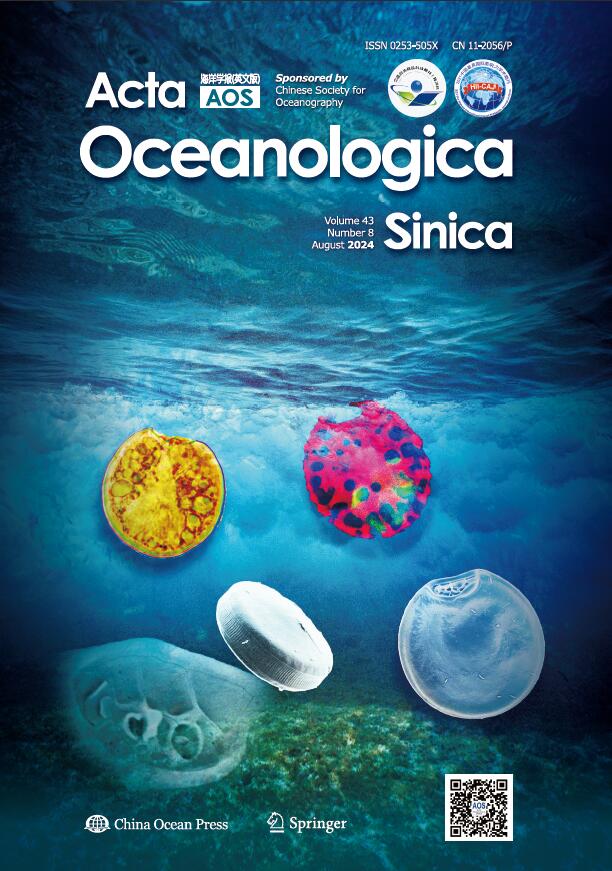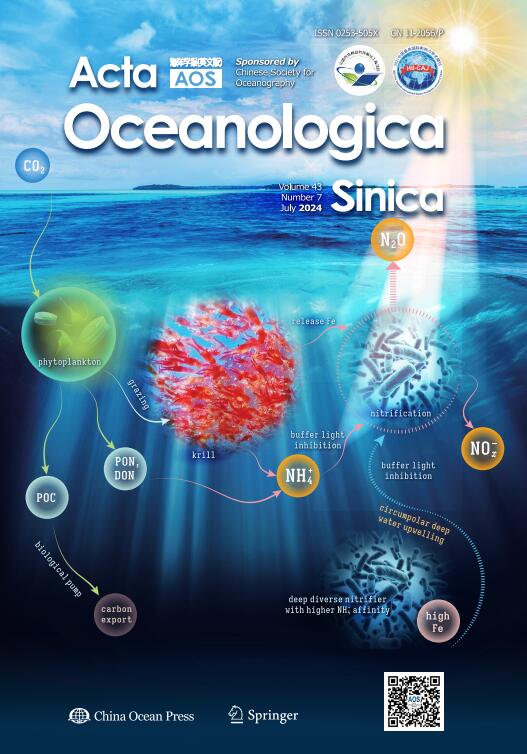2024 Vol. 43, No. 11
column
Display Method:
2024, 43(11)
Abstract:
2024, 43(11): 1-11.
doi: 10.1007/s13131-024-2432-6
Abstract:
Based on in-situ observations in the East China Sea (ECS) during October 2021, we investigated a cross-shelf penetrating front (PF) in the inner shelf and explored its potential biogeochemical-ecological effects from a multidisciplinary perspective. ...
Based on in-situ observations in the East China Sea (ECS) during October 2021, we investigated a cross-shelf penetrating front (PF) in the inner shelf and explored its potential biogeochemical-ecological effects from a multidisciplinary perspective. ...
2024, 43(11): 12-25.
doi: 10.1007/s13131-024-2433-5
Abstract:
Estuaries are often a significant source of atmospheric CO2. However, studies of carbonate systems have predominantly focused on large estuaries, while smaller estuaries have scarcely been documented. In this study, we collected surface and bottom se...
Estuaries are often a significant source of atmospheric CO2. However, studies of carbonate systems have predominantly focused on large estuaries, while smaller estuaries have scarcely been documented. In this study, we collected surface and bottom se...
2024, 43(11): 26-33.
doi: 10.1007/s13131-024-2430-8
Abstract:
Trace metals emitted from human activities may have penetrated into the deep seas, and the underlying control mechanisms remain poorly understood. Sinking particles collected by moored time-series sediment traps from the northern South China Sea (NSC...
Trace metals emitted from human activities may have penetrated into the deep seas, and the underlying control mechanisms remain poorly understood. Sinking particles collected by moored time-series sediment traps from the northern South China Sea (NSC...
2024, 43(11): 34-44.
doi: 10.1007/s13131-024-2397-5
Abstract:
Ridges are common features found on continental shelves and understanding their formation processes is crucial for sedimentology, stratigraphy, and geological engineering. This study investigates the development of ridges on the broad shelf of the Ea...
Ridges are common features found on continental shelves and understanding their formation processes is crucial for sedimentology, stratigraphy, and geological engineering. This study investigates the development of ridges on the broad shelf of the Ea...
2024, 43(11): 45-56.
doi: 10.1007/s13131-024-2313-z
Abstract:
The deltas serve as the primary interactive zone where terrestrial and marine environments converge, playing a pivotal role in the coastal deposition. In the Holocene, climate changes and sea level fluctuation are the principal driving factors in the...
The deltas serve as the primary interactive zone where terrestrial and marine environments converge, playing a pivotal role in the coastal deposition. In the Holocene, climate changes and sea level fluctuation are the principal driving factors in the...
2024, 43(11): 57-67.
doi: 10.1007/s13131-024-2434-4
Abstract:
The establishment of effective proxies for the differentiation of sedimentary facies in the tide-dominated river mouth is fundamental to the delineation of stratigraphy and the study of paleoenvironments. Geochemical signatures of the acetic acid (HA...
The establishment of effective proxies for the differentiation of sedimentary facies in the tide-dominated river mouth is fundamental to the delineation of stratigraphy and the study of paleoenvironments. Geochemical signatures of the acetic acid (HA...
2024, 43(11): 68-87.
doi: 10.1007/s13131-024-2380-1
Abstract:
The biological pump, driven by phytoplankton production and death, plays a crucial role in the ocean’s sequestration of atmospheric CO2. In particular, marginal seas with high primary productivity show a significant capacity for carbon fixation. Vari...
The biological pump, driven by phytoplankton production and death, plays a crucial role in the ocean’s sequestration of atmospheric CO2. In particular, marginal seas with high primary productivity show a significant capacity for carbon fixation. Vari...
2024, 43(11): 88-98.
doi: 10.1007/s13131-024-2381-0
Abstract:
The characteristics of the terrain of a strait can lead to a “fine tube” effect that enhances a monsoon and thereby affects the physical, chemical, and biological processes of marine ecosystems. This effect is a highly dynamic and complex phenomenon ...
The characteristics of the terrain of a strait can lead to a “fine tube” effect that enhances a monsoon and thereby affects the physical, chemical, and biological processes of marine ecosystems. This effect is a highly dynamic and complex phenomenon ...
2024, 43(11): 99-117.
doi: 10.1007/s13131-024-2431-7
Abstract:
As the most important component of marine siliceous organisms, diatoms are vital primary producers of the ocean that are often used as indicators of paleoenvironmental change. To understand the response of sedimental diatoms to regional environmental...
As the most important component of marine siliceous organisms, diatoms are vital primary producers of the ocean that are often used as indicators of paleoenvironmental change. To understand the response of sedimental diatoms to regional environmental...
2024, 43(11): 118-130.
doi: 10.1007/s13131-024-2437-1
Abstract:
The Macao Special Administrative Region is located in the southeastern coastal area of China. The region of Macao was narrow in the history, so land reclamation has become a main means of expanding its geographical scope. Exploring the significance o...
The Macao Special Administrative Region is located in the southeastern coastal area of China. The region of Macao was narrow in the history, so land reclamation has become a main means of expanding its geographical scope. Exploring the significance o...



